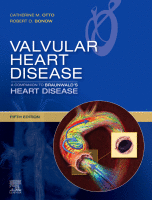Physical Address
304 North Cardinal St.
Dorchester Center, MA 02124

Key points Aortic stenosis is an active, progressive disease that involves inflammatory and bone mineralization pathways. The stages of aortic stenosis combine hemodynamic assessment, anatomic findings, symptomatic status, and ejection fraction measurements to help categorize management strategies. Echocardiography is the…

Key points Echocardiography is the primary modality for determining the morphology of the aortic valve and the cause and severity of dysfunction. In addition to symptoms, quantitative echocardiographic evaluation of left ventricular size and systolic function is key in clinical…

Key points Accurate risk assessment is a critical component of informed consent. Risk scores are predicted probabilities calculated from a multivariable logistic regression model that is calibrated using data on a specific treatment from a fixed period. They are accurate…

Key points Patients with valvular heart disease (VHD) are best cared for in the context of a multidisciplinary heart valve clinic. Many adverse outcomes for adults with VHD are caused by sequelae of the disease process, including atrial fibrillation (AF),…

Key points In patients with significant valve disease, symptom onset, morbidity, and mortality after fixing the valve lesion are influenced by ventricular and vascular factors. The structure and function of the left ventricle adapt differently over time to pressure overload…

Key points Despite a large burden of disease, understanding of the clinical and genetic risk factors for the development and calcific valve disease remains incomplete, and no medical treatment exists to prevent disease progression. In addition to the traditional atherosclerotic…

Key points Calcific aortic valve disease is an active, highly regulated process. The initiation phase has several similarities to atherosclerosis, including endothelial injury, inflammatory cell infiltration, and lipid oxidation. Valve interstitial cell activation leads to pathologic extracellular matrix remodeling and…

Key points Mitral Valve Three-dimensional echocardiography (3DE) provides real-time, detailed, nonplanar images of the complex mitral valve (MV) apparatus, including the annulus, leaflets, chordae, and papillary muscles. Quantitative analysis of MV anatomy, function, and motion using 3DE is significantly more…

Key points Valve disease is globally common, affecting approximately 2.5% of the population. In industrially underdeveloped countries, rheumatic disease (RhD) is the most common cause. Endomyocardial fibrosis is an underresearched disease common in equatorial Africa. In industrially developed regions, diseases…